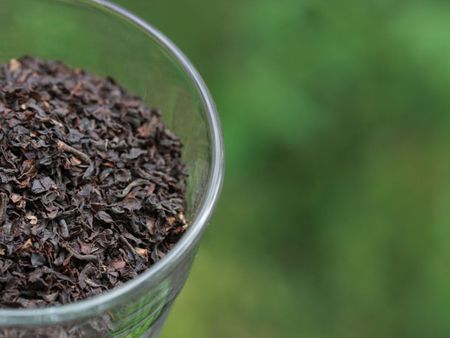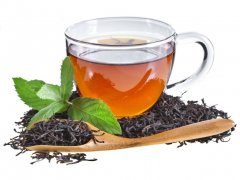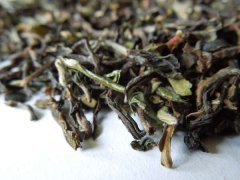Is Assam milk tea made in India? Introduction to the Origin of the Historical Story of Assam Black Tea in India
For centuries, black tea was considered to be Chinese territory until a new variety was discovered in India. Assam black tea rose to fame and quickly became the main competitor of China's tea monopoly. Nowadays, Assam black tea is popular because of its chocolate taste and rich taste. Black tea not only tastes good, it is also rich in health benefits, including increased energy and better overall health. The story of Assam begins with a British traveler and goes through a tortuous period of colonial rule. Assam is an important part of the Indian economy and even enjoys its own time zone. Read on to learn about the history of Assam tea and the process from leaves to cups. What is Assam black tea? Assam tea is a kind of black tea grown in Assam, India. India produces some of the most famous black teas, including Darjeeling black tea and Nilgiri black tea. Tea artists use a variety of tea trees, namely camellia (Camellia sinensis var. Assamica) to produce Assam tea. By contrast, Chinese black tea uses tea trees (Camellia sinensis var. Sinensis). This type of tea is similar to the tea varieties used to produce white tea, oolong tea and green tea. Assam grass is grown in tea gardens near sea level and grows best in tropical climates. Assam, located in northeastern India, is the largest tea growing area in the world, but its commercial tea production is lower than that of China. The tea garden straddles the banks of the Brahmaputra River and borders Bangladesh and Myanmar. It also borders the northern Himalayas and the Deccan Plateau. There are a lot of rainfall and monsoon events in Assam. Assam receives more than 10 inches of rain a day during the monsoon. The Assam region has also experienced high temperatures, creating a hot and humid environment, which is the reason for the malt nature of Assam tea. The taste of Assam black tea is malted, rich in body and bright in color, which is due to the large amount of tannins and polyphenols in the tea. This Indian tea is characterized by a refreshing aftertaste and a strong foundation, making it easy to combine with additives to form a unique flavor mixture. Because of its malt taste, Assam tea is the most common breakfast tea, such as Irish breakfast tea and English breakfast tea. This kind of tea is also widely used as the basis for making Massala tea. Assam tea is traditionally drunk as morning tea because it contains moderate caffeine and helps to awaken the senses and improve mental clarity. The history of Assam black tea for centuries, Indian tribes have been growing Assam tea and using it in mixed tea. In 1823, Scottish explorer Robert Bruce visited Assam and Assam black tea was introduced to Europe for the first time. Bruce noticed a wild plant similar to tea near Lampur. A local chief showed Bruce how tea was made and drunk. Bruce sent the samples back to England to verify the species of plants. However, it was not until 1930 that the factory conducted an actual analysis in Calcutta. The researchers found that this kind of tea is a unique variety, which is different from the Chinese variety. After discovering this discovery, the British began to actively seek to counterbalance China's stronghold in the tea production market. In 1834, the British East India Company set up the Tea Committee and began to analyze the potential of Assam tea as a commercial product. The first tea company, founded in 1839, specializes in growing and producing Assam tea. In less than 30 years, the tea company is composed of five listed companies with more than 160 tea gardens. British tea merchants began to test the attractiveness of Assam tea in the London market and responded positively. Citizens love the classic breakfast tea from Assam, and the British government is starting to increase production. Large tracts of forest and farmland have been converted into tea gardens and estates growing in Assam. In order to increase production, tea farmers are often encouraged to work long hours. With the increasing prominence of fair trade practices, workplace abuse in tea gardens has decreased significantly.

Tea time Today, the Assam region of India even has its own special time zone. The Indian government, like the Chinese, has reserved a time zone for their vast country. India is divided into three separate time zones by its size and location, although only one time zone is used. As Assam is located in northeastern India, tea farmers have experienced short periods of sunshine, which makes it more difficult to harvest and produce tea. The solution is to create a separate time zone called Bagan time or tea garden time. This time zone is an hour earlier than IST, and the staff work in the tea garden from 8am to 4pm. During the colonial period, the British established a time system to explain the time of sunrise. At present, some activists are working to extend this special time zone to other states in northeastern India. At present, Assam is still the only tea-producing area with its own time zone. Assam tea production only tea grown in the Brahmaputra River valley can be classified as Assam tea for sale. The area produces nearly 507 million kilograms of tea every year. Many tea producers in Assam are proud of their organic methods and produce healthy organic black tea. Organic Assam leaves are grown without pesticides, fertilizers or other harmful chemicals. Tea is harvested twice a year, which is called red tide. The first red tide begins at the end of March and usually lasts until the end of May. The second florescence usually occurs in June, and the leaves are used to make tea. Tippi tea is a kind of Assam tea with a fuller taste and a slightly sweet taste. Tea from Assam is picked by hand and placed in large bamboo baskets or cloth bags. Once the container is full, the leaves are transported to the on-site production facility. After tea is picked, black tea is made within 24 hours and sorted within 48 hours. The first step in this process is called wilting. Fresh tea leaves are spread out on bamboo mats or cloth-covered grids until they lose moisture and become soft. This process usually takes 12 hours. Then roll the leaves in a large metal bucket or put them in a CTC machine. CTC means "cut-tear-roll", a method of crushing and scraping leaves to release enzymes. The purpose of the rolling process is to make the leaves easy to oxidize. Black tea has the highest degree of oxidation among real teas. The crushed leaves are again spread out on the tray to oxidize. These enzymes react with oxygen, slowing down the rate at which the leaves turn dark brown or black. Tea experts closely monitor oxidation and decide when to take the next step. When the leaves reach a predetermined oxidation level, the leaves are dried to prevent further browning. Assam tea is usually dried with hot air, but other methods include frying pan and steaming. Then the dry tea is classified and packaged. Tea powder, broken leaves and fans are used to make tea bags, while high-quality tea is sold as loose-leaf tea. Assam tea is also a delicious black tea worth a try, whether it's hot or cold. It provides a refreshing taste as iced tea and warm aromas when used hot. Make a batch of Assam loose tea in your favorite teapot and add a little sweetener if necessary. A small amount of milk, nut milk, or even condensed milk can be added to make it sweeter. If you want a bolder taste, try soaking Assam black tea for 4 to 5 minutes instead of the usual 3 minutes. As long as you pay attention to the longer the soaking time, the more astringent the tea will be. Although Assam tea is traditionally regarded as morning tea, it is also a great afternoon tea. The caffeine in Assam's tea can help you spend a lazy afternoon and reinvigorate your brain. The long history deepens the mellow taste of malt.
Important Notice :
前街咖啡 FrontStreet Coffee has moved to new addredd:
FrontStreet Coffee Address: 315,Donghua East Road,GuangZhou
Tel:020 38364473
- Prev

The difference between traditional black tea and new craft black tea is which traditional Dianhong or sunburn tastes better.
What is the comparison of tea evaluation? Comparison and evaluation is to soak two or more kinds of tea together to determine the unique characteristics of each kind of tea. This practice helps to compare different brands, harvests and grades of tea. Comparison and evaluation can also help you develop your sense of taste, allowing you to better enjoy subtle nuances.
- Next

How to distinguish between Assam black tea and Darjeeling black tea? Exquisite description of Darjeeling black tea flavor
If you have read a little black tea, you may have heard of Darjeeling Tea. Like Assam tea, it is one of the most popular black teas in India. The uniqueness of this black tea lies in the taste of its unique musk wine. Here, you can learn more about Darjeeling Tea, including different tea types and cultivation.
Related
- What ratio of water temperature and ground does the smart cup method use to press coffee? The difference between brewed coffee and filtered coffee?
- What is the standard process for the purpose of coffee cup testing? What is the difference between hand-brewed coffee and cup testing?
- How to use hand-brewed coffee paragon small golden balls? How does cold coffee lock in the aroma of coffee?
- Is American coffee black? What is the difference between American coffee and drip coffee?
- Unexpected! Well-known tea beverage brand Lele Tea will withdraw from the Zhengzhou market!
- Starbucks enters the fashion and beauty industry?! Netizen: Give me an ice American eye cream
- Why can American refills for free? The difference between Americano and American drip pot coffee
- Being chased out of the rain in front of Starbucks?! Store: Sheltering from rain under umbrellas poses a safety hazard
- The white moonlight has changed?! Lucky launches "Big Winter Pear American"
- Hand-brewed coffee three-stage method, high-sweet and universal brewing method to share! What does the high sweet water level of hand-brewed coffee mean?

